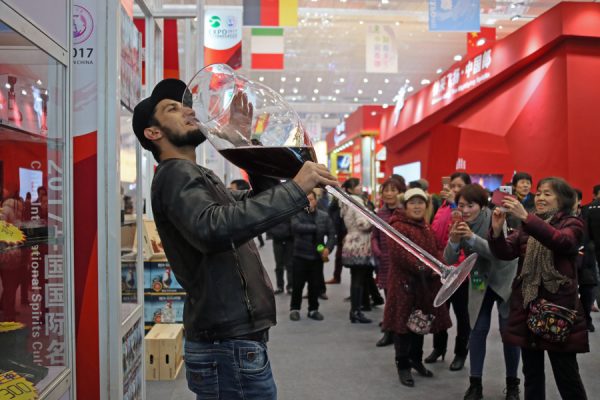
Evolving tastes of young consumers likely to expand sales to $23 billion in three years
China expects to become the second-largest market for wine by 2021, replacing the United Kingdom, as young consumers’ preferences are evolving, experts said.
China’s wine market size is expected to reach $23 billion in sales revenue by 2021 with an average annual growth rate of more than 30 percent, suggesting the strong wine-consumption potential of the world’s most populous country, according to a recent report released by Vinexpo, one of the largest global exhibitions for wine and spirits, and the International Wine and Spirit Research.
“It’s a common phenomenon, also in developed countries, that when the economy does well, low-alcohol beverage becomes more popular,” said Li Demei, a wine expert from the Beijing University of Agriculture.
Drinking spirits or hard liquor may easily get young consumers drunk and even result in poor behavior. That’s why, drinks like wine with relatively milder flavor and low alcohol content are considered a wiser choice, he said.
Agreed Guillaume Deglise, CEO of Vinexpo. “In China, knowledge and educational background are gradually replacing wealth as the symbol of people’s social status. And wine sales benefit from this change,” Deglise said.
Wine sales are rising as the post-1990s generation has been joining the workforce. The millennials tend to care more about their own feelings and physical condition, according to Li.
“Not long ago, the previous generation used to be seen in a common scene where people, either willingly or due to social compulsions, would sit around a table shouting ‘ganbei!’ (bottoms up) and urge each other to drink more, until everyone got dead drunk,” Li said. “Now, for the millennials, such things are unacceptable.”
Deglise said women show a special preference for wine compared with men because “drinking wine is more elegant than drinking beer”.
Compared with the United States and European countries such as the UK, France and Italy, the domestic market is still dominated by baijiu, a Chinese traditional liquor, which contributed about 60 to 70 percent to the whole alcohol market of up to 900 billion yuan ($142 billion).
Wine, with 2,000 years of history in China, has seen steady growth in the last five years, thanks to the positive performance of the economy and the ongoing consumption upgrade among Chinese customers, Li said.
China’s market share in wine consumption reached about 8.71 percent in 2017, ranking third worldwide, and it expects to surpass the UK as the second biggest in 2021, with the US remaining at the top of the pack, the report said.
“The whole world is exploring the Chinese market,” Li said.
To expand influence among Chinese consumers, he suggested local producers should target the mass market and put emphasis on the taste of fruit in the wine.
Besides, wine advertisements should be simple and convey a sense of fun, instead of having accent on knowledge or technical jargon, Li said.
“Ordinary consumers may not bother to figure out what is ‘legs’ or ‘acetic acid’, so just give them basic information such as the optimal storage temperature,” he said.


